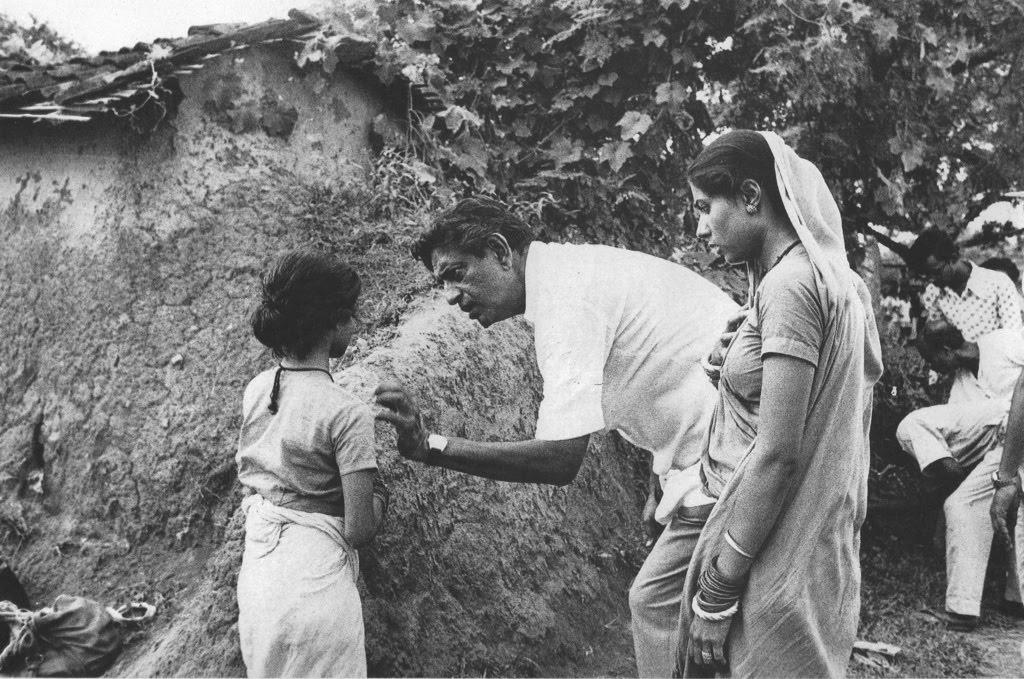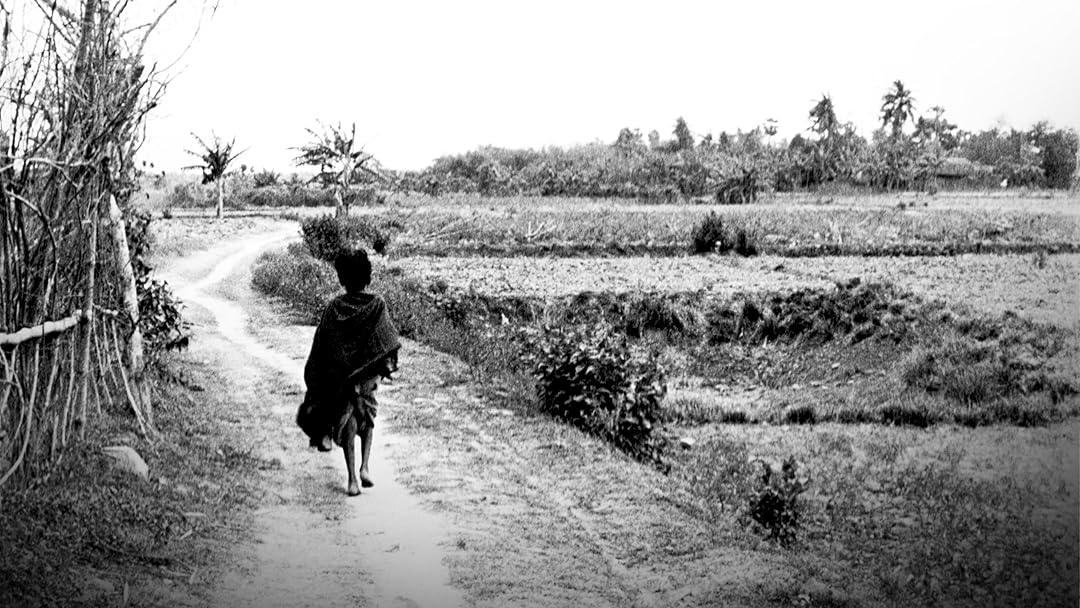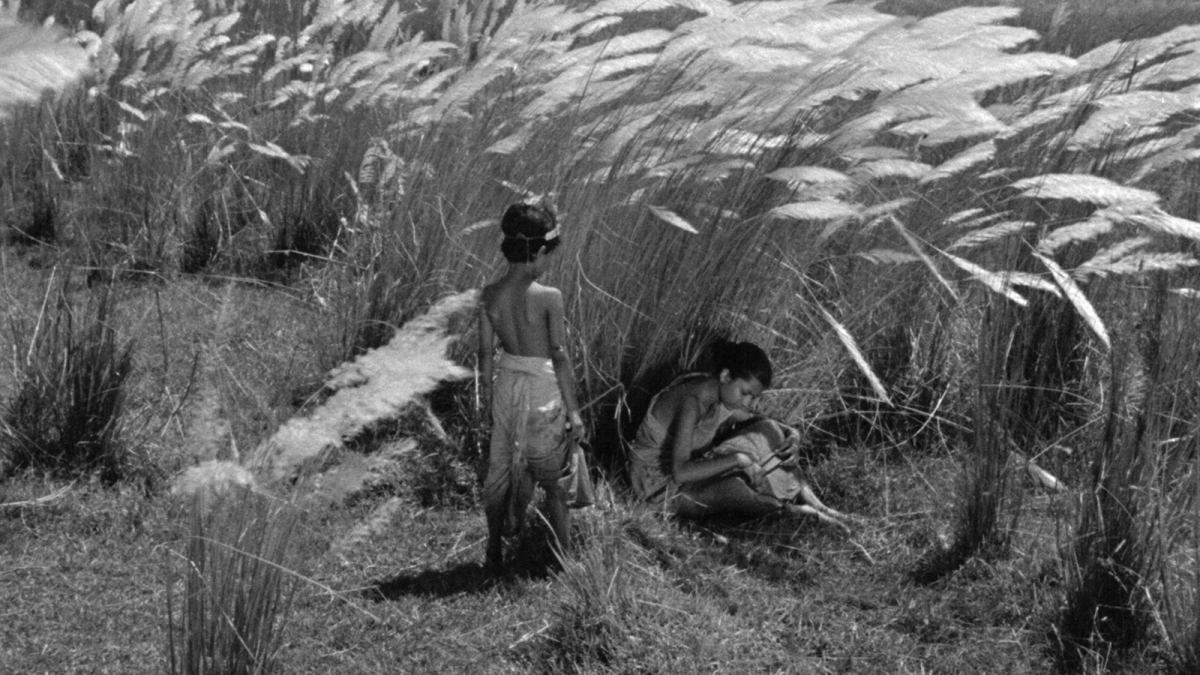Pather Panchali (1955)

Pather Panchali (1955) – A Timeless Masterpiece of Indian Cinema
Satyajit Ray’s Pather Panchali (1955) is a landmark in world cinema, renowned for its poetic storytelling, realistic portrayal of rural India, and deeply humanistic approach. As the first installment in Ray’s Apu Trilogy, the film captures the innocence, struggles, and resilience of a family grappling with poverty in early 20th-century Bengal. With a hauntingly beautiful score by Ravi Shankar, naturalistic performances, and Ray’s meticulous attention to detail, Pather Panchali stands as one of the greatest films ever made.
Plot Overview
The film follows Harihar (Kanu Banerjee), an impoverished priest and writer, his wife Sarbajaya (Karuna Banerjee), their young daughter Durga (Uma Dasgupta), and their youngest child, Apu (Subir Banerjee). Living in a dilapidated rural home, the family struggles to make ends meet, with Sarbajaya bearing the brunt of the household responsibilities. Durga, a spirited and mischievous girl, finds joy in simple pleasures, despite the hardships surrounding her.
As the story unfolds, Harihar leaves home in search of work, leaving Sarbajaya to manage the household alone. The bond between Durga and Apu grows as they explore their village, sharing moments of joy, wonder, and curiosity. However, tragedy strikes when Durga falls ill during a monsoon storm, leading to one of the most heartbreaking moments in cinematic history. Harihar returns home only to face a devastating loss, prompting the family to leave their ancestral village in search of a better future.
Themes and Symbolism
Pather Panchali is a meditation on poverty, human resilience, and the passage of time. The film does not romanticize hardship but presents it with an unflinching sense of realism. The contrast between innocence and suffering is poignantly depicted through the eyes of Apu and Durga, whose fleeting moments of happiness are constantly overshadowed by the harsh realities of life.
The theme of nature plays a crucial role in the film, symbolizing both beauty and destruction. The famous sequence where Apu and Durga run through a field of tall grass to glimpse a passing train reflects their longing for a world beyond their own. Similarly, the monsoon serves as both a life-giving force and a harbinger of sorrow, emphasizing nature’s duality in shaping human destinies.
The film also explores gender roles and societal expectations. Sarbajaya, despite her hardships, is a pillar of strength, holding the family together in the absence of her husband. Durga, on the other hand, represents defiance and youthful exuberance, yet she is ultimately constrained by the limitations imposed on her.
Satyajit Ray’s Directorial Genius
As Ray’s directorial debut, Pather Panchali revolutionized Indian cinema with its neorealistic approach. Inspired by Italian neorealism and the works of filmmakers like Vittorio De Sica, Ray chose to cast non-professional actors, use natural locations, and employ a documentary-style approach to storytelling. The film’s minimalistic yet deeply evocative cinematography, captured by Subrata Mitra, enhances its emotional depth, bringing the struggles of the family to life with unfiltered authenticity.
Ray’s ability to extract raw and natural performances from his actors is one of the film’s greatest strengths. Subir Banerjee’s portrayal of young Apu is remarkably genuine, while Karuna Banerjee delivers a powerhouse performance as Sarbajaya, embodying both resilience and vulnerability. Uma Dasgupta’s Durga leaves an indelible impression, her character’s spirit and tragic fate lingering in the viewer’s memory long after the film ends.
Ravi Shankar’s Immersive Score
Ravi Shankar’s evocative sitar compositions serve as the soul of Pather Panchali, heightening its emotional impact. The music flows seamlessly with the narrative, underscoring moments of joy, wonder, and sorrow. The recurring flute motif, often associated with Apu and Durga’s innocence, takes on a hauntingly melancholic tone in the film’s later moments, reinforcing the sense of loss and impermanence.
Cinematic Influence and Legacy
Upon its release, Pather Panchali was met with critical acclaim, winning the Best Human Document award at the Cannes Film Festival in 1956. It paved the way for Indian cinema’s recognition on the global stage and remains one of the most celebrated films in cinematic history.
The film’s influence can be seen in the works of directors like Martin Scorsese, Wes Anderson, and Abbas Kiarostami, who have praised Ray’s storytelling and visual style. Pather Panchali also set the standard for neorealist storytelling in India, inspiring generations of filmmakers to explore deeply personal and socially relevant narratives.
Final Thoughts: Why Pather Panchali Is a Timeless Masterpiece
More than six decades after its release, Pather Panchali continues to resonate with audiences worldwide. Its poignant exploration of human struggle, its breathtaking cinematography, and its unforgettable characters make it a film that transcends cultural and linguistic barriers. Ray’s masterful storytelling ensures that the film remains as relevant today as it was upon its release.
For anyone seeking a profound cinematic experience, Pather Panchali is a must-watch—an emotionally rich and visually stunning masterpiece that celebrates both the beauty and fragility of life.











